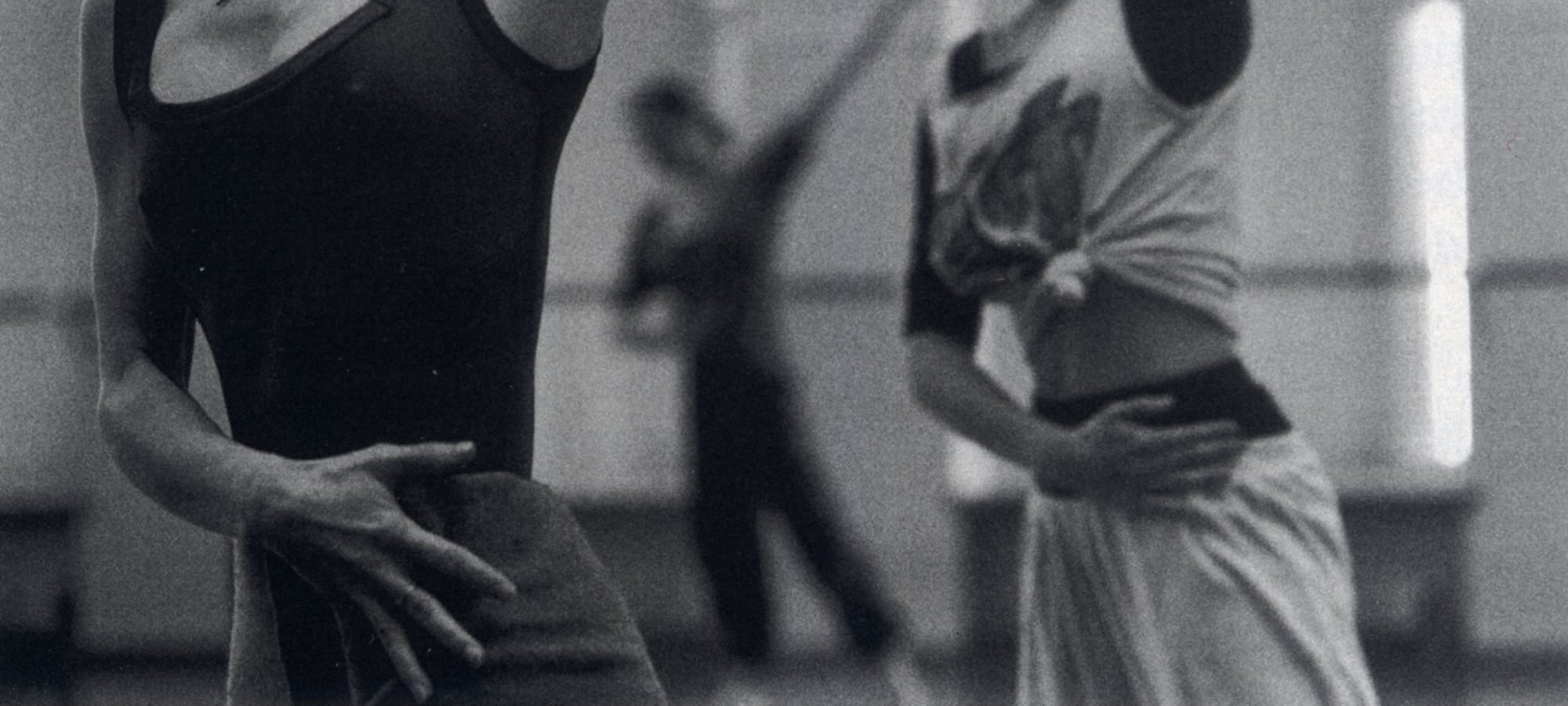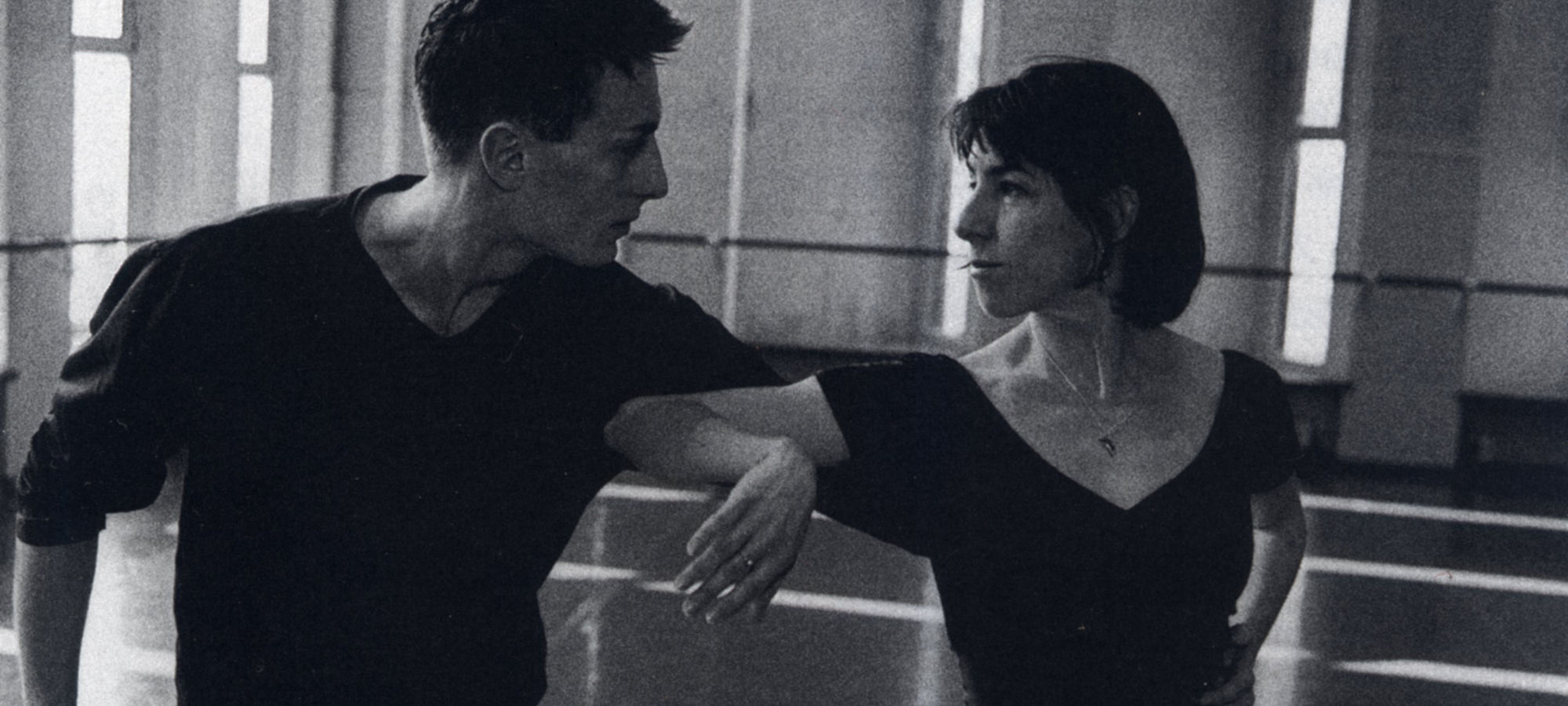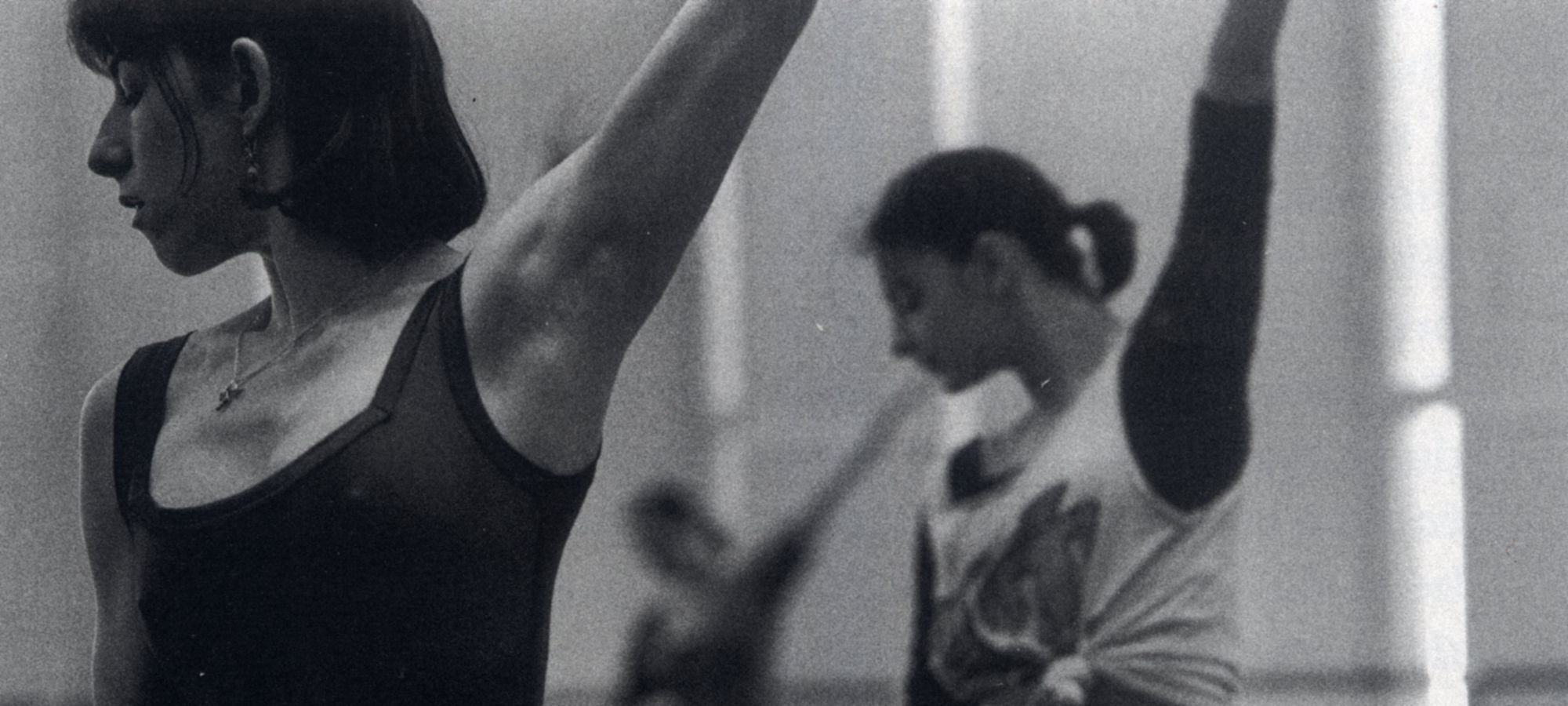
The Twins' Shadow
The work for 18 dancers draws much of its substance from the duet Image that Kelemenis wrote in 1994. For the second time, he embraces a dance of numbers and explores the voice of multiplication, which he prefers dynamic rather than formal.
The twins are born in a cerebral and sensitive soil. They are not to be sought among the dancers: for the choreographer, they are the cypresses found in landscapes in southern Europe that vertically rip into an otherwise impeccable azure. Twins, this would be the dance and the music that never tires of questioning, of playing with notions of similarity and strangeness, with shimmering and expanding light, each in his own way, echoing one another.
Didier Puntos was commissioned to write the music. While very sensitive to Debussy’s music, he nevertheless wrote a score for a very Barotkian ensemble of 2 pianists and 2 percussionists.
Echos
L’Alsace Dominique Bannw
24 apr. 1999
By inviting 2 contemporary French choreographers, Bertrand d’At has once again given his dancers the opportunity to have an intense experience where their joy bursts clearly into view on stage.
The Ballet director played the card of total creation with Michel Kelemenis. A new choreographic production A l’ombre des jumeaux is coupled with a new musical work by Didier Puntos for piano and percussion. Behind the apparent lightness of Kelemenis’ dance, sweeping and free, always open to the next gesture, a more complex choreographic pattern emerges. Just like the musical score coming from the pit, it runs along non-mimetic lines, but with back and forth movements that link their respective intentions, which immediately put them back into play on a new path.
The basic concept being the double, and the reduction of a unique element through various combinations and symmetries, which in turn add up or subtract. The “twins,” simply represented at the back of the stage by 2 cypresses, present their immobility to the successive waves that convene in their shadow. Couples, quartets and other multiples develop a myriad of snapshots that bind together as living cells and divide in a movement that can be imagined as infinite. The dancing body of Kelemenis liberates solar energy, radiant, generous and ultimately sensual.




